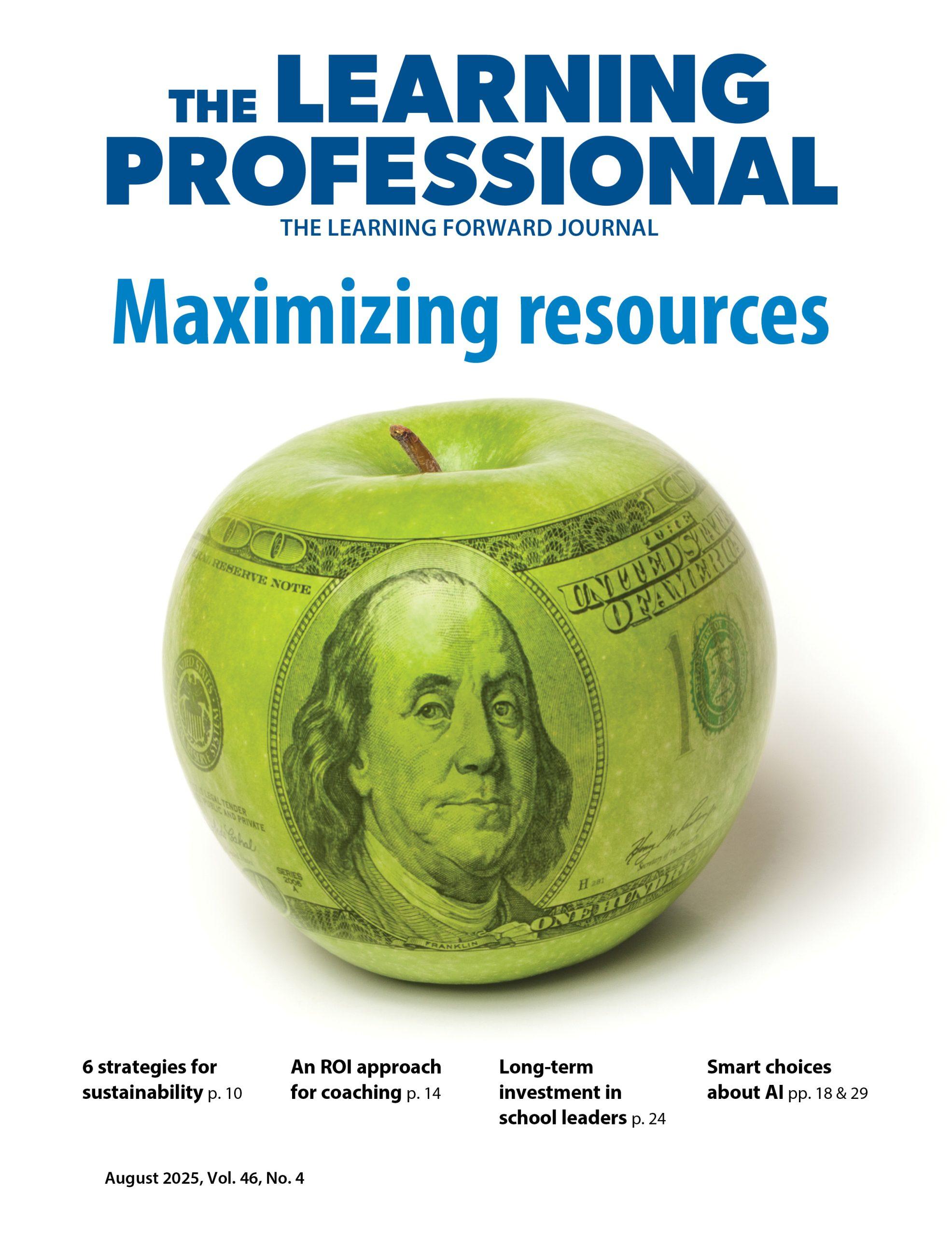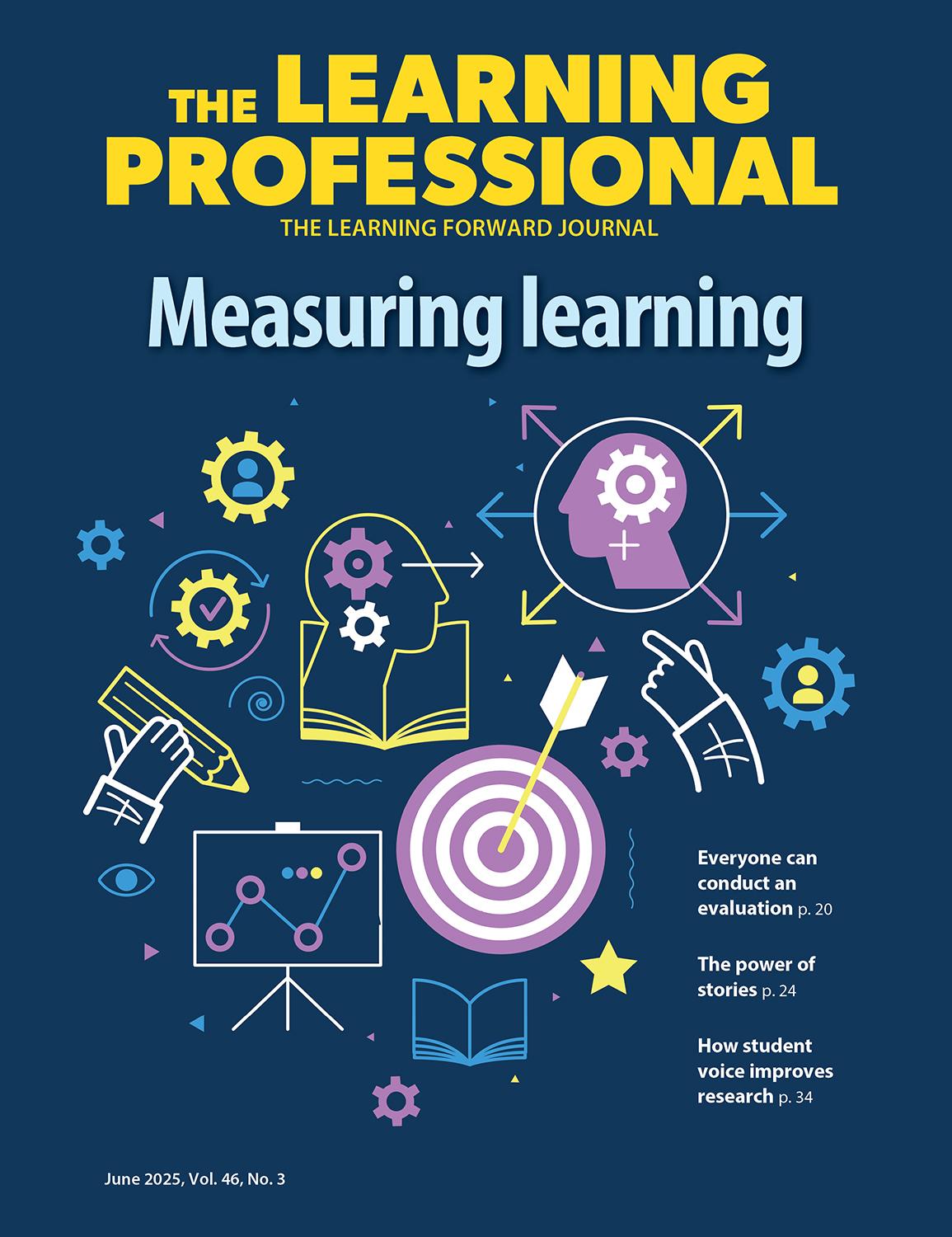Connect The Dots
A dedicated system for learning links teacher teams to student outcomes
By Learning Forward
April 2012
Vol. 33 No. 2
Read the remaining content with membership access. Join or log in below to continue.
Sed ut perspiciatis unde omnis iste natus error sit voluptatem accusantium doloremque laudantium, totam rem aperiam, eaque ipsa quae ab illo inventore veritatis et quasi architecto beatae vitae dicta sunt explicabo. Nemo enim ipsam voluptatem quia voluptas sit aspernatur aut odit aut fugit, sed quia consequuntur magni dolores eos qui ratione voluptatem sequi nesciunt. Neque porro quisquam est, qui dolorem ipsum quia dolor sit amet, consectetur, adipisci velit, sed quia non numquam eius modi tempora incidunt ut labore et dolore magnam aliquam quaerat voluptatem.

References
Ermeling, B. (2010). Tracing the effects of teacher inquiry on classroom practice. Teaching and Teacher Education, 26(3), 377-388.
Gallimore, R., Ermeling, B.A., Saunders, W.M., & Goldenberg, C. (2009). Moving the learning of teaching closer to practice: Teacher education implications of school-based inquiry teams. Elementary School Journal, 109(5), 537-553.
Goldenberg, C. (2004). Successful school change: Creating settings to improve teaching and learning. New York: Teachers College Press.
Graff-Ermeling, G. (2007). Building coherence: The role of an externally supported, site-based leadership team, in sustaining settings for instructional improvement. Santa Monica, CA: LessonLab Research Institute.
Saunders, W. & Goldenberg, C. (2005). The contribution of settings to school improvement and school change: A case study. In C. O’Donnell & L. Yamauchi (Eds.), Culture and context in human behavior change: Theory, research, and applications (pp. 127-150). New York: Peter Lang.
Saunders, W.M., Goldenberg, C.N., & Gallimore, R. (2009). Increasing achievement by focusing grade-level teams on improving classroom learning: A prospective, quasi-experimental study of Title I schools. American Educational Research Journal, 46(4), 1006-1033.
Learning Forward is the only professional association devoted exclusively to those who work in educator professional development. We help our members plan, implement, and measure high-quality professional learning so they can achieve success with their systems, schools, and students.
Recent Issues
MEASURING LEARNING
June 2025
To know if your professional learning is successful, measure educators’...
NAVIGATING NEW ROLES
April 2025
Whether you’re new to your role or supporting others who are new,...
LEARNING DESIGNS
February 2025
How we learn influences what we learn. This issue shares essential...
BUILDING BRIDGES
December 2024
Students benefit when educators bridge the continuum of professional...









